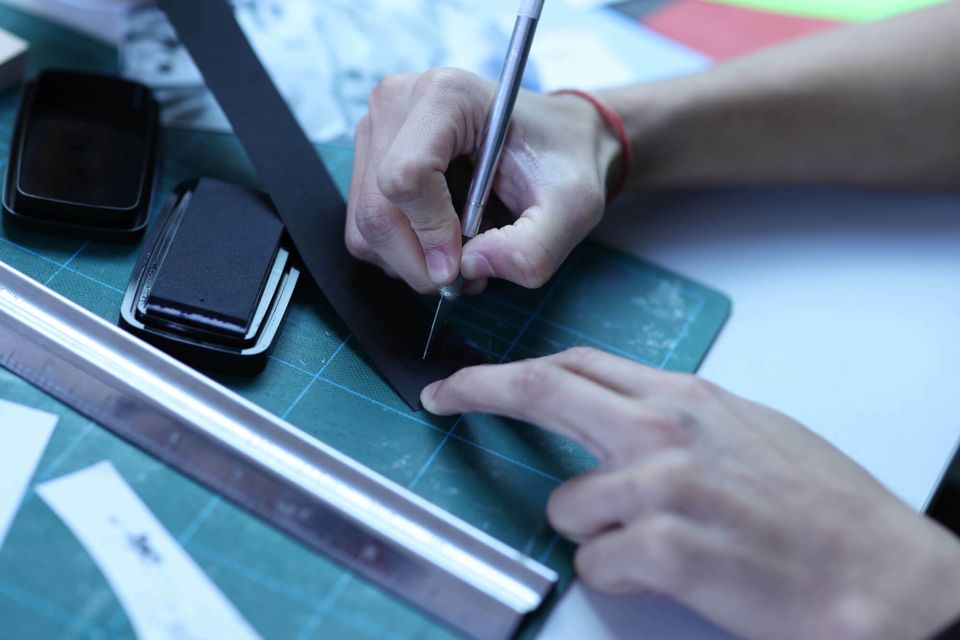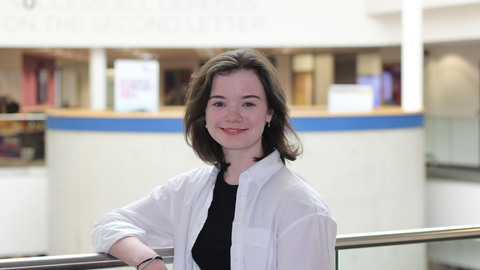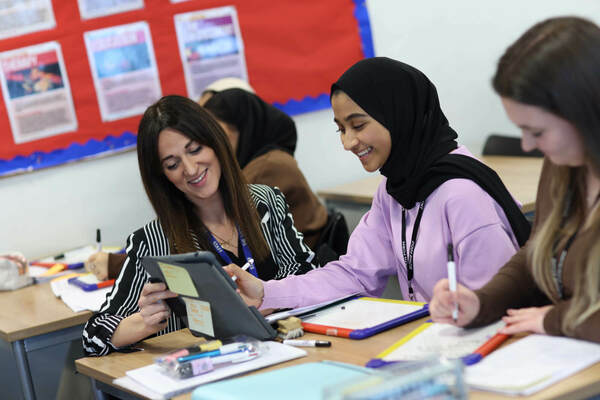Graphic Design
Course overview
Graphic Design is an area of employment growth in the UK. Effective designers have a keen visual awareness combined with excellent visual communication skills both verbally and on paper. They embrace new technologies, love to experiment, are sticklers for detail and always meet deadlines. Studying Graphic Design will allow you to explore and develop these skills, create unique and innovative graphic design and work in a professional studio environment.
Entry requirements
Students studying three A Levels will be expected to have a minimum of two GCSEs at grade 6 and three other GCSEs at grade 5/4 or above, including English Language and Mathematics at grade 5/4. Or eight GCSEs at a minimum of grade 5.
Please note, it is necessary to have studied Art & Design at GCSE to study A Level Graphic. However, all prospective students are invited for an art assessment, this is completed on campus in June. This two hour workshop is designed to test skills and fluency when handling the formal elements and creative interpretation of a theme. Any student who does not have GCSE Art & Design but completes the workshop to a high standard may be accepted on the course.
Topics you will study
You will cover eight design principles, these underpin everything you do in graphics. Once you know how to work with these rules, then break them, you can create anything from poster and book designs, to websites, animations and UI designs.
The history of design - understanding what has come before you helps you to contextualise your own creative practise and gives you a wider pool of knowledge to pull from.
Workshops - a mixture of analogue and digital, we explore the creative potential of silk screen printing, reportage illustration, monoprinting and collage, alongside Illustrator's vector-based image making and typography tools, Photoshop's image editing tools, InDesign's layout tools and After Effects motion graphics and animation tools. All mixed with learning different research methodologies, idea generation and project management skills.
Typography and Lettering - designing hybrid and bespoke fonts and lettering using both analogue and digital tools.
Graphic Design - book design, magazine design, design for the music industry and poster design, using both analogue and digital tools.
Branding and Advertising - creating a brand from scratch, researching its core customers, brand attributes, generating a bullseye diagram, a branding booklet, stylescape and ad campaign.
Illustration & Animation - reportage, abstract/expressive, observational, graphic novels, exploring what is drawing, stop motion, frame animation and motion graphics.
UI - user experience design - creating the look and feel of apps, websites and packaging design.
Key features
Observational drawing underpins all you do on this course. You will work from your own drawings and photographs and you will be taught to draw for a range of different purposes; such as to generate primary sources, idea generation and sketching. Drawing allows you to collect information, express and communicate feelings, opinions and ideas, helps to solve problems and develops your visual thinking skills and allows you to explore a wide range of materials and media, both traditional and digital.
Students will work across the following pathways: illustration/animation, typography and lettering graphic design, advertising and branding and animation/motion graphics. You will create many wonderful things and you will explore the design process thoroughly with dedication and creativity. You will extend and develop work produced in class in your own time. Students are expected to set aside a minimum of five hours a week outside of class time to develop the techniques, ideas and experiments started in class. This type of self-directed independent study is what sets students head and shoulders above others. Graphic design is everywhere, it is important you begin to observe, reflect and evaluate on the types of design around you and document this research in your sketchbooks. A word about sketchbooks! You will use sketchbooks to document all the work you do. They require a degree of commitment from the beginning which may be quite daunting at first. You will be shown how to layout your sketchbooks in a creative and skilful way and taught to thoughtfully, critically and analytically examine both your own work and the work of others. You will learn how to document your creative making process and develop your graphic image making skills.
Assessment
Component one: Personal Investigation (60% of final grade) throughout the first year and into December of the second year.
Component two: Externally set assignment (40% of final grade) runs from February to May of your second year.
Both components are internally assessed and externally moderated. You will also present a portfolio and an exhibition of your work covering both components which is internally assessed and externally moderated.
Exam Board: Eduqas
Enrichment and Work Experience
There is an expectation that students will complete a one-week work placement. Throughout the academic year there will be several day trips to galleries, design studios and city visits to gather and practise your observation recording techniques. Some will be enriching, but for those that are compulsory, travel costs will be met by The Sixth Form. Enrichment workshops are run throughout the year offering a range of activities including: animation, dark room photography, workshops with visiting designers like Ben Tustin (Bind Studios), artists from Islington Mill, Hotbed Press and Salford Makers and Christine Charnock (The BBC). Entering competitions is also a key part of enrichment, in the past our students has been successful in gaining first place positions across a range of exciting external competitions.
Why choose B6?
We will encourage you to develop skills which will assist you in your future career and help you to build up an innovative and exciting portfolio of work which will support you in progressing on to university, an apprenticeship or employment.
Future career opportunities
Students go on to study art and design at pre-degree foundation level or a BA degree. Our students have progressed to areas including: graphic design, illustration, motion graphics, animation and art or gallery director.
Additional information
To support your studies, you must have access to either a desktop computer or laptop that is powerful enough to run Adobe Creative Cloud's suite of apps. You will also be required to purchase relevant materials as the course develops. Most are readily available from reputable art supply shops and/or from ourselves. Please note this is a consumable subject, students will have to pay for specialist media and materials throughout their time here.
Mollie Turner
Studying:
A Level Fine Art, Graphic Design, Mathematics and Honours Programme with EPQ
Previous school:
St Ambrose Barlow RC High School
Related Courses
News
Exceptional achievement for young rugby stars
Exceptional Achievement for Young Rugby Stars Jack Lightbown, aged just 17, was recently selected
B6 Art & Design and Photography Students Join Open Art Exhibition
We are delighted to announce that all the Art & Design and Photography learners and staff who
The Sixth Form Bolton students unveil heritage-filled art project at Manchester’s Trafford Palazzo
Talented art students from The Sixth Form Bolton have witnessed their work in the spotlight during









